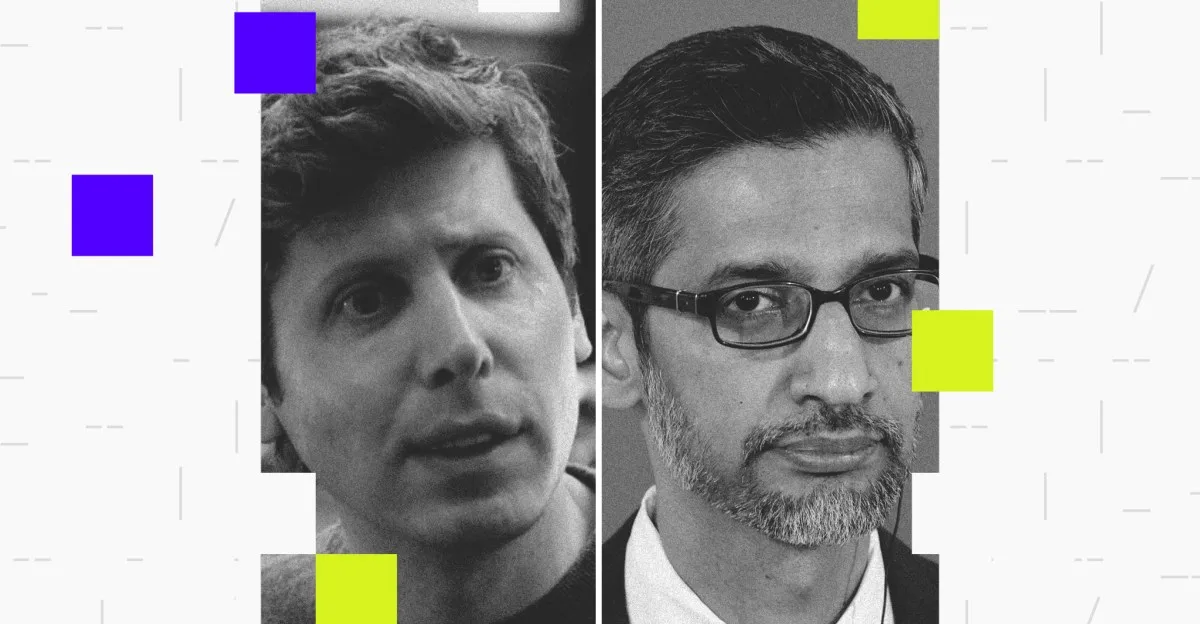
The dynamic landscape of artificial intelligence (AI) has witnessed a significant showdown between two tech giants, OpenAI and Google, especially since the launch of ChatGPT. The rivalry reached a new peak as both companies prepared for their respective events this week. Leading up to Google’s I/O conference, tensions ran high among Googlers, who were apprehensive about Sam Altman potentially overshadowing their announcements. This concern stems from last year's incident when OpenAI unveiled ChatGPT's advanced voice mode just a day before Google’s event.
This time, however, OpenAI made headlines by announcing its acquisition of the “io” hardware division from Jony Ive's design studio, LoveFrom, a strategic maneuver that many viewed as an act of SEO sabotage. Although sources indicate that the name “io” stands for “input output” and was chosen some time ago, the timing of the announcement quickly diverted attention from Google’s strong performance at I/O.
The contrasting strategies of OpenAI and Google highlight their positions as leading AI companies. While Google's models are technically advanced and widely adopted, OpenAI excels in garnering public attention and generating buzz. Delving deeper into OpenAI’s recent announcement reveals that the company is set to invest $6.5 billion in equity to recruit approximately 55 professionals from LoveFrom, including former Apple design leaders like Evans Hankey, Tang Tan, and Scott Cannon. These new recruits will work under Peter Welinder, a seasoned product leader at OpenAI, reporting directly to Altman.
Interestingly, while the majority of LoveFrom’s designers, including notable figures like Mike Matas, remain with Ive, the partnership between Ive and Altman is poised to shift the AI landscape significantly. OpenAI's press release stated that Ive and his team will take on profound design and creative responsibilities within the organization. Once LoveFrom wraps up its existing projects, the design team will focus solely on OpenAI while retaining their independence.
OpenAI is also actively seeking new talent for its “future of computing” initiatives, with job listings aimed at senior research engineers who have experience in training models. Compensation for these roles ranges from $460K to $555K, plus equity. The timeline leading to this moment is fascinating: Altman and Ive first met two years ago and decided to collaborate on hardware projects around the same time last year. The io division was originally established at LoveFrom to collaborate with a select group of OpenAI employees, and both OpenAI and Laurene Powell Jobs invested in this venture toward the end of 2024.
Importantly, Jony Ive ended his consulting ties with Apple in 2022, paving the way for this new collaboration with Altman. Speculation is rife about the development of a voice-first AI device, with early prototypes already in existence. Altman has hinted that this device will be portable, potentially similar in size to an iPod Shuffle, and could even be worn as a necklace. Additionally, there are rumors of AI earbuds being developed as part of a larger strategy to bundle hardware with ChatGPT subscriptions, reducing reliance on Apple and Google for distribution.
In contrast, Google showcased its AI capabilities at I/O, rolling out AI Mode in Google Search widely. Despite some disjointedness in product strategy compared to OpenAI, Google is leveraging its vast reservoir of personal data to enhance its AI offerings. With nearly 500 million monthly users, Google's Gemini aims to integrate seamlessly with its services like Gmail, Workspace, and YouTube, offering users compelling reasons to stay within its ecosystem.
After engaging with various teams at Google, it became evident that the company does not anticipate a crisis in the near future, despite the challenges posed by competitors. Although ChatGPT is encroaching on search functionalities, Google is modernizing its search tools at a rapid pace. The company appears well-positioned to continue leading in model development, with its Gemini models performing excellently and aligning with the post-phone landscape through initiatives like Project Astra.
Not to be left out, Anthropic also made waves this week by launching its Claude 4 models, which it claims are the best for coding tasks. As OpenAI, Google, and Meta vie for dominance in the AI interface layer, Anthropic positions itself as a pivotal model provider. Notably, there are tensions within the industry, as seen when Windsurf, rumored to be in talks with OpenAI, was not granted immediate access to the new models.
This week, Microsoft held its Build conference, which was overshadowed by protests against its business dealings with Israel. Despite several notable announcements, including Elon Musk's Grok model coming to Azure, the event was marred by disruptions from protestors.
In terms of hardware innovation, I had the opportunity to try Google’s prototype smart glasses, which featured a basic interaction interface with Gemini. While the technology is still in its infancy, Google is strategically partnering with brands like Warby Parker to introduce Android XR in glasses expected to launch next year. As Apple gears up to release its own AI-powered glasses by 2026, Meta's position as the sole player in this market could soon be challenged.
In personnel news, YouTube has appointed Justin Connolly from Disney as its head of media and sports, a move that has led to a lawsuit from Disney. Additionally, Tinder CEO Faye Iosotaluno is stepping down, with her role assumed by Spencer Rascoff, CEO of parent company Match Group. Other notable transitions include Vladimir Fedorov, a former engineering executive at Meta, joining GitHub as CTO, and Will Robinson, former VP of engineering at Coinbase, taking on the role of CTO at Plaid.
In conclusion, the ongoing rivalry between OpenAI and Google is reshaping the AI landscape. As both companies pursue innovative strategies to capture market share and user attention, the future of AI remains an exciting and rapidly evolving arena.